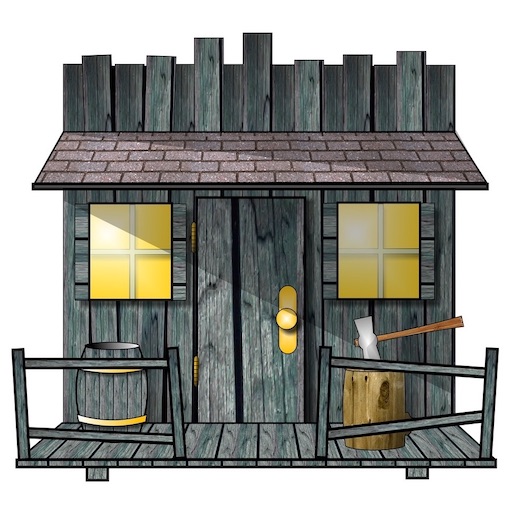Since I’ve published Tilly’s Very Bad Day I figure I should update my painting guide for the Thirty Years War (1618-1648). Although the title refers to the Spanish this is the guide covers all troops in Spanish service whether Spanish, Italian, or Walloon.

General guidelines on Spanish
The Spanish favoured individuality over uniformity. Spaniards of the Thirty Years War were far less splendid than their counterparts of the Italian Wars but still proud of their appearance. Although military costumes were relatively sober the Spanish retained their liking for reds and yellow. Sashes and plumes, if worn, were always red. By 1650 the Spanish favoured a black hat, white shirt, dark brown doublet and breeches and buff coat was the norm (Gush, 1975). Armour was usually blackened in this period although the Spanish favour bright steel.
| Item | Colour |
|---|---|
| Hats (if worn) |
Gush (1975) says by 1650 a black hat was the norm. Most of my current infantry have black hat, some with brown.
Historical illustrations suggest white (or possibly light brown or light grey), with a red plume was also used |
| Hair (their own) | Black or dark brown |
| Doublet / Coat / Jacket |
Sombre versions of earlier favourites: red (most common), yellow (common), green, blue, but also white, black, grey, brown, etc (Gush, 1975).
Gush (1975) says by 1650 a dark brown doublet and breeches was the norm, although the illustrations show many exceptions. |
Breeches | The same variety of colours as tunic. Breaches were tied at the knee by a ribbon in a matching or contrasting colour |
| Cassock (if worn) | Grey |
| Cloak, cape | Scarlet |
| Gloves | White or possibly Light brown. Dragoons, for example, had calf skin gloves. |
| Shirt | White |
| Stockings | White or red. |
| Leather (Boots + straps + belt, etc) | Brown or black. |
| Sash (worn by officers, pikes and cavalry), scarves | Red |
| Plate armour and helmets | Varied but usually bright steel. Could be gilded, or blackened. Helmets had red plume. |
| Buff coat | Buff (often worn over plate armour) |
| Cartridge bag | White |
| Powder flask | Blue |
| Horse harness | Brown leather, sometimes red. Saddle cloth variations on red and yellow |
| Cavalry lance | Wood with yellow over red pennant |
Spanish Cavalry
Broadly speaking there were three types of cavalry in the Thirty Years War (Brzezinski, 1993). The type affected how the men behaved, or more importantly for a painting guide, how they looked.
- Arquebusier (Harquebusier, Bandelier Reuter, Carbine): men armed with an arquebus. The better equipped would have a back and breast and/or a helmet.
- Horsemen (Reiters, Lätta ryttare): men armed with pistols. They might have back and breast and a helmet, or a hat and no armour at all. For example, native Swedish cavalry.
- Cuirassier (Kürisser, Kürassirer, Corazzen): men in 3/4 armour and helmet, armed with pistols. Over time their equipment lightened and they essentially morphed into Horsemen.
Spanish Cuirassiers (including Lancers)
The Spanish term is Caballos Corazas (Horse Cuirassiers). I imagine early war caballos corazas looked quite like German cuirassiers. Perhaps with a bit more colour and shinier armour. The Spanish also had lancers in the 30 Years War but only in the guard companies. Same deal but with a lance.


Spanish Horsemen
Late war caballos corazas, like everybody else, had abandoned the heavy armour. They look quite Spanish with their morions, reds and yellows.
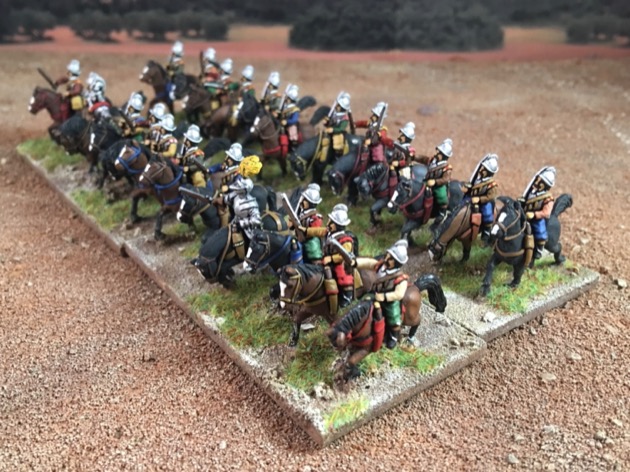
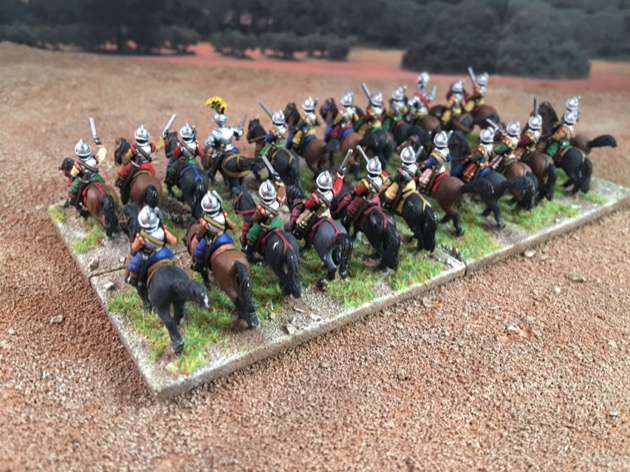
Spanish Arquebusiers
The Spanish mounted arquebusiers are identical to their german counter parts.
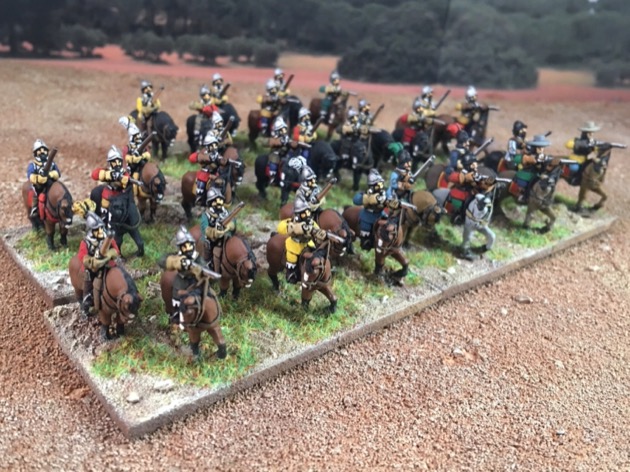
My mounted arquebusiers are a little too brightly coloured as many of them started life as part of uniformed Dutch units. That was before I realised cavalry uniforms weren’t really a 30 Years War thing. So I rebased and mixed them up. If I did this again I’d tone them down a fair bit. More blacks and browns with splashes of colour.


Spanish Infantry
Lots of black hats. Some brown. Various coloured clothes. Shiny armour. White shirts. Red or white stockings.


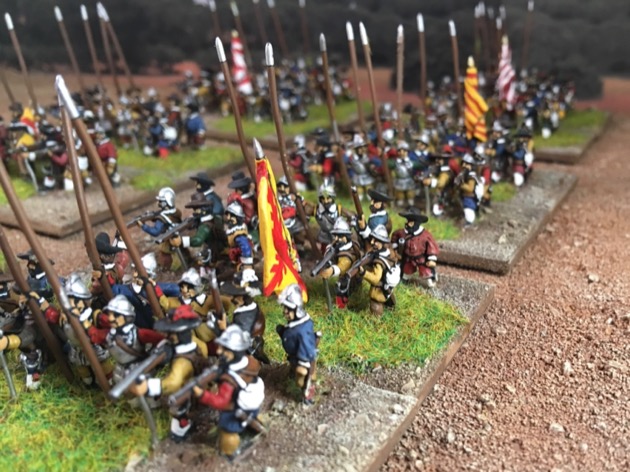

Spanish Dragoons
Apparently early dragoons had a white slouch hat with a red feather, buff coat, calfskin gauntlets and boots, and breeches decorated with red slashes and piping (Gush, 1975). I’m not sure about later dragoons.

Although that dress code for Spanish dragoons is pretty explicit and clear, and many might have followed that pattern, I suspect there was still a lot of variation because the Spanish loved individuality.
I’ve included some Catholic German dragoons for inspiration re individuality; also look at Spanish infantry.
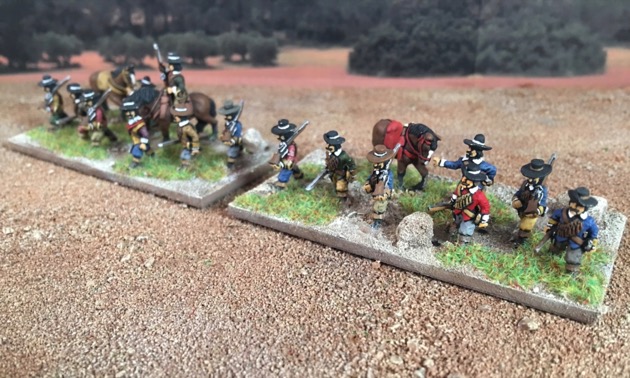
Spanish Flags
Have a look at these:
Regimental Colour of the ‘Tercio’ Ambrosio de Spinola 1621 (Spain)
“Capitana” flag of “Tercio” Company of Infantry, Battle of Rocroi, 1643
Regimental Colour of Infantry 1680 (Spain)
Spanish infantry: Regimental colours, 1693
Where to get Tilly’s Very Bad Day
Tilly’s Very Bad Day is available for Download (PDF).
Acknowledgements
Roland Davis painted the vast bulk of my Thirty Years War armies including all of the Spanish figures.
My only contribution is to put them all on Big Bases.
Vinkhuijzen collection of military uniforms
I’ve included a few pictures are from the New York Public Library (NYPL): The Vinkhuijzen collection of military uniforms. Vinkhuijzen is not particularly reliable on his dates, but the illustrations are indicative of this period.


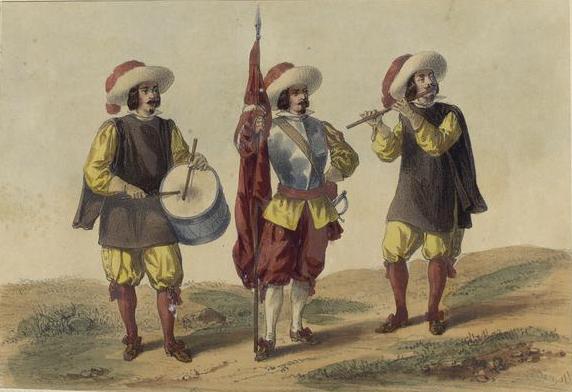

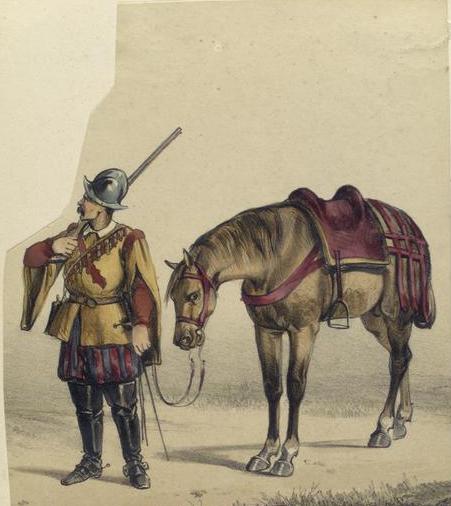
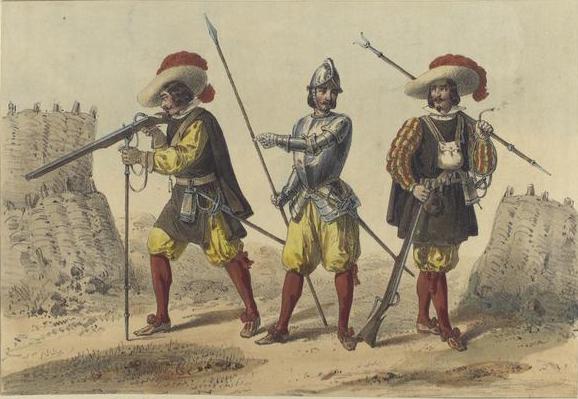

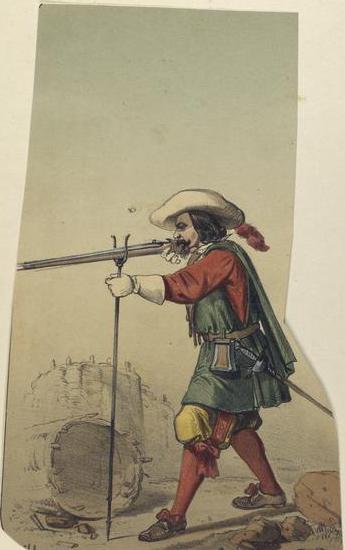


References
Brzezinski, R. (1993). The Army of Gustavus Adolphus (2): Cavalry [MAA 262]. Osprey.
Gush, G. (1975). Renaissance Armies 1480-1650. Patrick Stephens.
Heath, I. (1997). Armies of the Sixteenth Century: The Armies of England, Ireland, the United Provinces, and the Spanish Netherlands 1487-1609. Foundry Books.
Miller, D. (1976). The Landsknechts [Men-At-Arms 58]. Osprey.
Parker, G (1977). The Dutch Revolt. Cornell University Press.
New York Public Library (NYPL): The Vinkhuijzen collection of military uniforms
